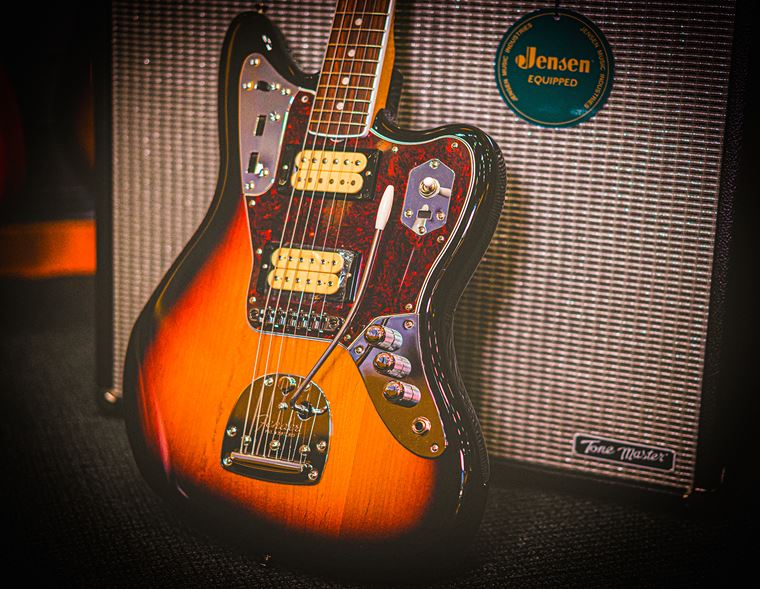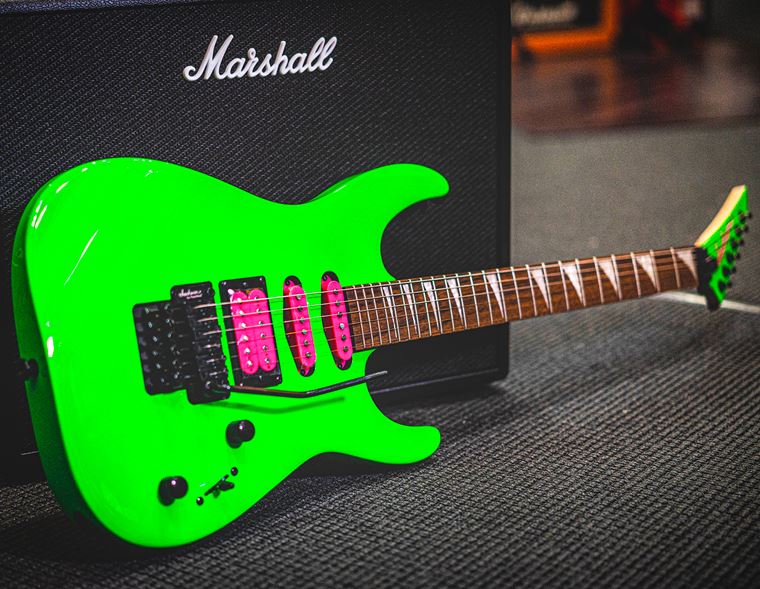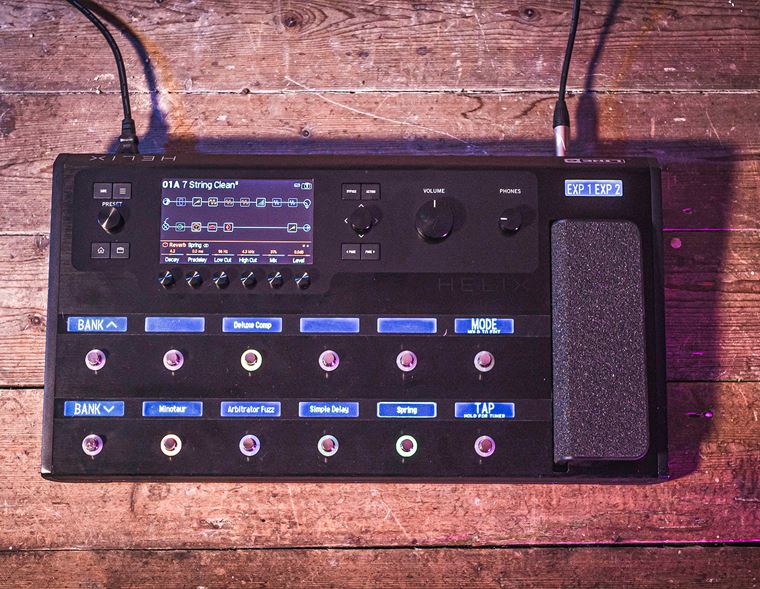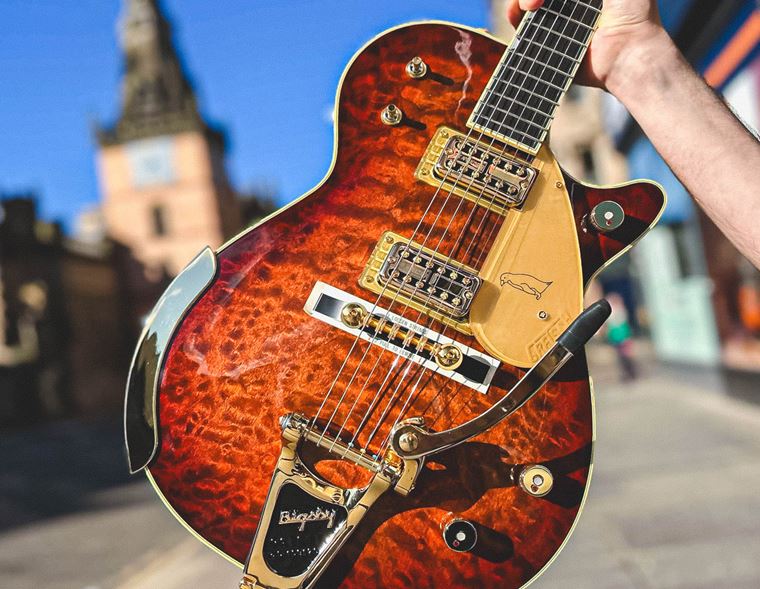Fender Japan: A Brief Guide
Fender Japan. Made in Japan. Crafted in Japan.
These three terms have been bywords for a special class of guitar for well over three decades now. Japanese Fender guitars are highly sought after by players and collectors alike, thanks to their low production numbers and non-standard specifications. Fender’s Japanese output is known for being not only extremely high quality, but also for being somewhat mysterious too… A lot of Fender’s Japanese instruments are (or were, at least) intended for the domestic Japanese market only, so over here in the UK we only catch sporadic sightings of these rare animals. It all just increases the excitement!
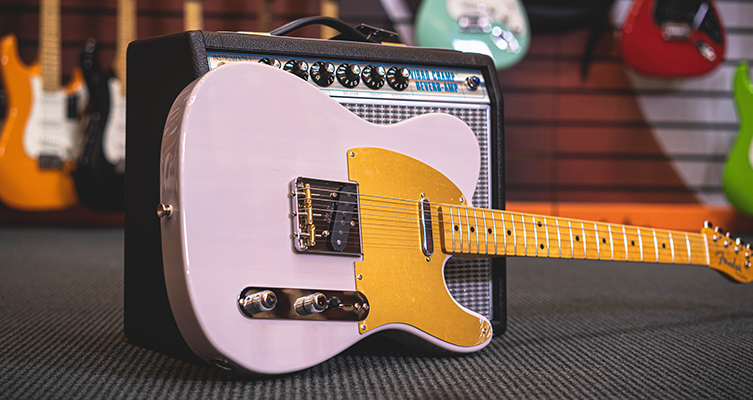
A recent delivery of some rather excellent JV Modified Japanese Fenders has had us thinking about the whole subject of Far Eastern Fenders. We know they are great, but we don’t know too much more than that.So, armed with no small amount of curiosity, we set off to get some answers! Today’s blog hopefully provides some of those, plus a little look at some of our current Japanese-made Fender guitars.
CBS and the Copycats
Why did Fender even have a line of Japanese guitars in the first place? Well, to better understand this, we need to revisit the mid-to-late 70s. By this point, Fender were over a decade into being owned by the TV production company CBS. To simplify a relatively large subject here, this era of Fender is generally recognised as having suffered a dip in quality, or at least of consistency. Other companies were building electric guitars that were inspired by Fender’s designs, and some of the Japanese examples, such as those of Tokai and Greco, were gaining reputation as being equal to, or even better than, the American originals.
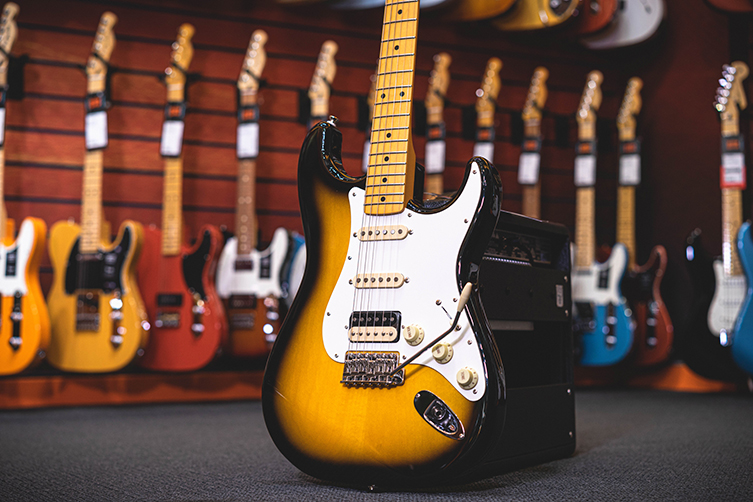
As well as the stiff competition from these makers, some companies were flat-out copying the guitar designs wholesale. Cheaper to produce and sell, these ‘lawsuit era’ copycats were finding a large and approving market with players who wanted a little of the Fender vibe without having to pay the expense of a US-made Fender guitar. This was a problematic time for the company, but their response was a good one.
Fener went to bigger Japanese retailers such as Kanda Shokai and Yamano Gakki, and agreed to work together to have officially licensed Fender instruments built and sold on the Japanese market through these companies, instead of them selling the imitation instruments that were causing Fender problems. These companies had previously been commissioning such instruments for sale in their stores, so it made good sense for everyone to drop the copies in favour of a competitively priced line of guitars that bore the official Fender logo! Kanda Shokai actually owned the Greco brand anyway, and so in partnering with Fender, they agreed to stop building Greco guitars, in effect removing the competition!
Fender picked the Fujigen workshop for their production, and from 1982-1996, this is where all Fender Japan guitars were made. The quality remained as exceptional as it had been before, but this time it was Fender’s name on the headstock. When you hear misty-eyed players speaking in reverence for the days when the Japanese Strats were better than the American ones, it’s these Fujigen ‘Made in Japan’ guitars they are referring to. Whether they were better is entirely subjective, but the fact that the question exists speaks very highly for these guitars indeed.
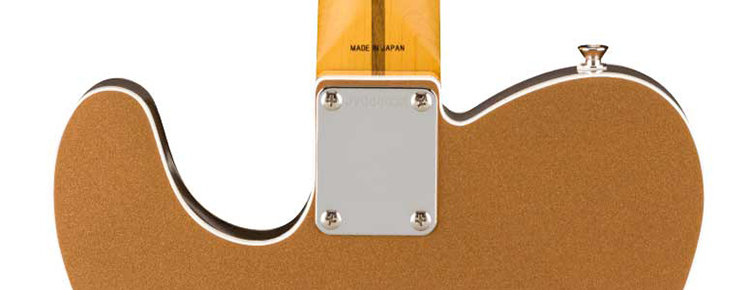
Made in Japan or Crafted in Japan?
Another important distinction to the fan of the Japanese Fender is whether the serial number bears the legend ‘Made in Japan’ or ‘Crafted in Japan’ above it. Put simply, instruments built by Fujigen use ‘Made in Japan’, whereas all others use ‘Crafted in Japan’. Fujigen made the overwhelming majority of all Japanese-built Fenders from the 82-96 period, but from 1992 onwards, Dyna Gakki also produced certain numbers of guitars due to demand. This occurred until Fujigen finished their contract in ‘96, so certain Japanese Fenders from the 92-96 period will indeed bear the ‘Crafted in Japan’ legend. Most of these guitars were not formally promoted to the European market, though. The great majority remained in Japan, and as a result, some wonderfully unusual Fender models have come and gone over the years without Western players ever getting a look at them! It all adds to the fun for the collectors seeking these out online nowadays!

After 2015, Fender took up the ‘licence’, as it were, and began building their own instruments in Japan. These are the guitars you’ll see hanging on the walls of guitarguitar whenever we can get them! Fender tend not to make a high number of Japanese guitars, and they do not always follow the same typical ranges and reissues we see with the US and Mexican-made guitars, so a new delivery of Japanese guitars is always an exciting prospect!

It’s true that the usual conventions are not followed, but the limited edition Fender Japan guitars always keep their stylings ‘in house’, as it were. Take, for example, this rather fetching Jazzmaster: it has the binding and block inlays of some 70s examples, but we’ve never seen a production Jazzmaster with a pair of Wide Range humbuckers before! It fits the style well and gives offset fans something different.

Talking about unusual offsets, another great example of Fender Japan changing things up is the Limited Edition Offset Telecaster. If you were to take a Tele and change its body shape to that of a Jaguar, this is pretty much entirely what you get here! Again, it’s very ‘Fender’ even though the blend is pretty far from any typical catalogue model. The Fiesta Red finish on this one just adds to the creative melting pot of Fender ingredients! It’s worth mentioning that today’s Japanese Fenders are now stamped ‘Made in Japan’ once again, causing further confusion!
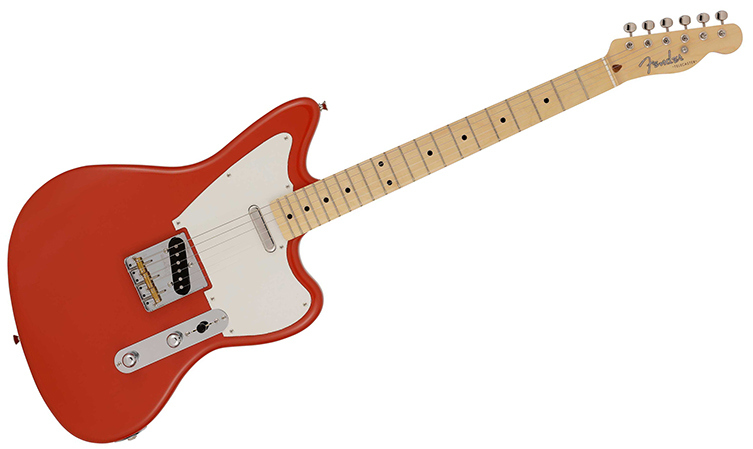
Fender JV Modified, New for 2022
This leads us to today. As we mentioned earlier, this whole article was inspired by a delivery of quite lovely Japanese Fenders. Known as the JV Modified range, they are an interesting collection of four guitars - two strats and two teles - with a ‘semi-historical’ approach to their spec.

Each model actually shares a lot of similar characteristics, from vintage pickups to somewhat less vintage 9.5” radius fingerboards. Best of all is the thick ‘Soft V’ neck profile on all of them, which just feels so playable and ‘right’! We’d love to see this wonderful neck shape making its way to more of the Fender lines, actually, because the comfort factor has us playing longer: it’s addictive!
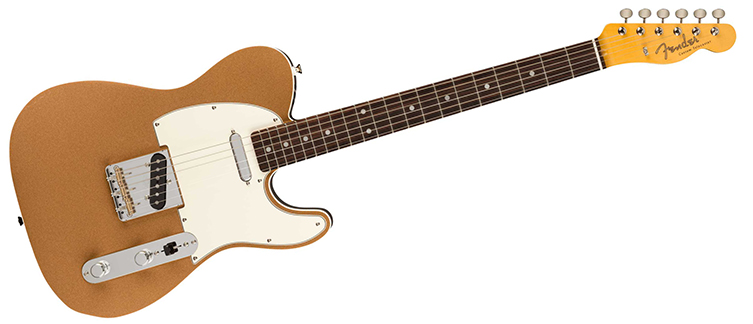
Otherwise, you get 21 fret necks, basswood bodies, binding on the 60s Tele and a ‘hot alnico’ humbucker on the 50s Strat. We love the finishes too (particularly that gold Tele…) and feel like these are a great example of what Fender Japan can offer the player: classic guitars that don’t break their back trying to be ‘authentic’, and also offer a more modern level of playability without going down any particular ‘performance’ or ‘shred’ route. We love them!
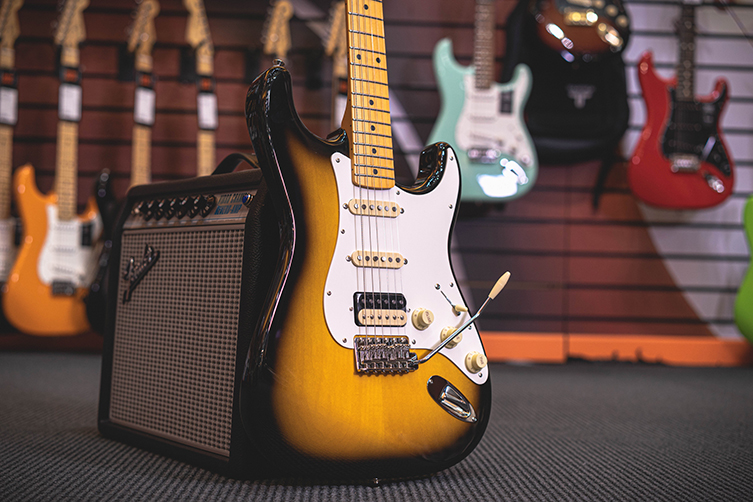
Fender Japan are a wonderful middle point between Fender’s Mexican and Californian offerings. You’ll find guitars coming from Fender Japan that are not unique to the stable, and you can be sure that they will be superb instruments, not to mention notable! More than ever, there’s a Fender for every player, so make sure you keep an eye on our site for more incredible Japanese Fenders!





